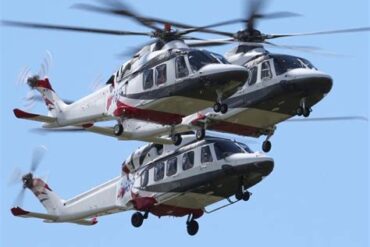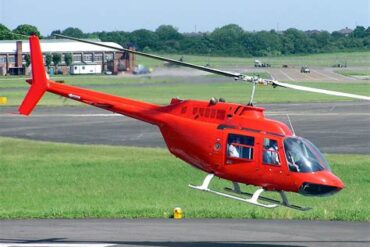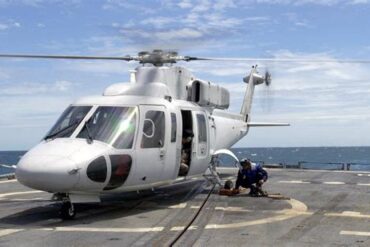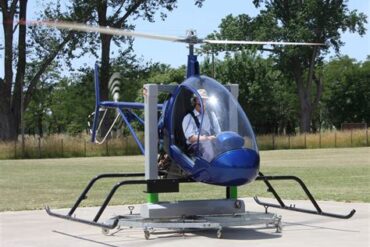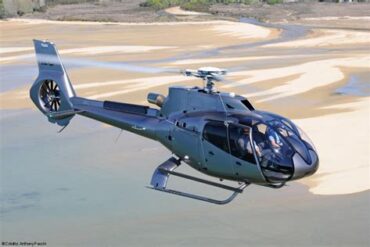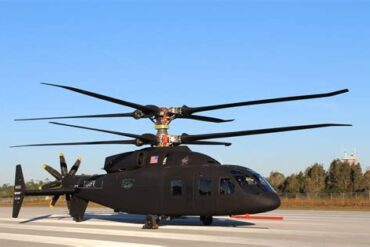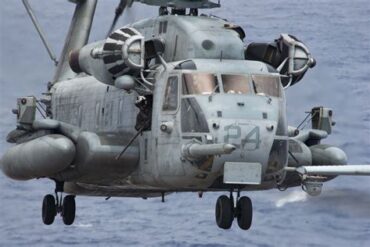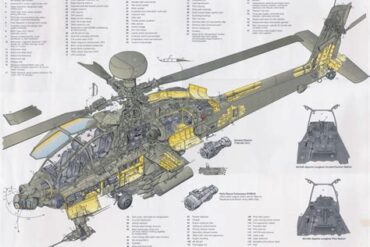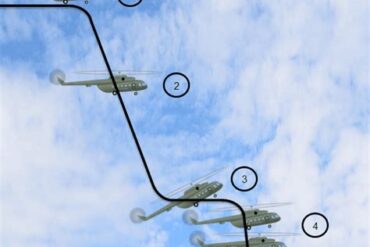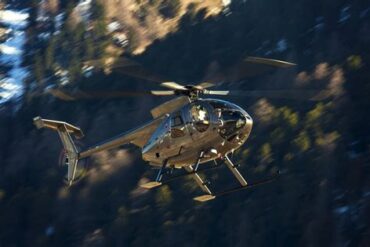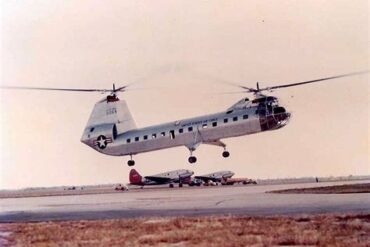Kawasaki Heavy Industries, a prominent player in the aerospace sector, has established itself as a leader in the design and manufacturing of helicopters. With a legacy that spans decades, Kawasaki helicopters are known for their advanced technology, reliability, and versatility. This guide aims to provide a comprehensive overview of Kawasaki helicopters, exploring their history, key models, technological advancements, applications, and much more.
History of Kawasaki Helicopters
Kawasaki Heavy Industries was founded in 1896, and since then, it has diversified into various fields, including aerospace, transportation, and defense. The company’s foray into helicopter manufacturing began in the 1950s, during which it developed the Kawasaki KV-107, a model that marked its entry into the aviation sector. The KV-107 was a medium transport helicopter that showcased Kawasaki’s engineering capabilities, featuring twin-engine configuration and advanced rotor technology.
Over the years, Kawasaki has continued to innovate, producing a series of successful helicopter models that have been adopted by both military and civilian sectors worldwide. The commitment to research and development has allowed Kawasaki to maintain its competitive edge and adapt to changing market demands.
Key Models of Kawasaki Helicopters
1. Kawasaki BK117
The BK117 is perhaps the most well-known Kawasaki helicopter, developed in collaboration with MBB (Messerschmitt-Bölkow-Blohm) of Germany. This twin-engine helicopter, first introduced in the late 1970s, has gained significant acclaim in the emergency medical services (EMS), law enforcement, and corporate sectors.
Equipped with state-of-the-art avionics and safety features, the BK117 is designed for versatility. Its spacious cabin can accommodate a variety of missions, from medical evacuations to cargo transport. The BK117’s exceptional performance in urban environments, combined with its low noise levels, makes it a preferred choice for operators seeking efficiency and reliability.
2. Kawasaki OH-1
The OH-1 is a notable reconnaissance helicopter developed for the Japan Ground Self-Defense Force. Known as the “Ninja,” the OH-1 features a sleek design and advanced sensor systems, allowing for superior situational awareness in combat scenarios. With its agility and speed, the OH-1 excels in reconnaissance missions, providing crucial intelligence support to ground forces.
The helicopter’s rotor system is designed for enhanced maneuverability, enabling it to operate effectively in confined spaces. Additionally, the OH-1 is equipped with a range of armaments, including guided missiles, making it a formidable asset in military operations.
3. Kawasaki KH-4
The KH-4 is a utility helicopter designed for various applications, including cargo transport and search and rescue operations. Its robust design and powerful engines enable it to operate in diverse environments, from mountainous terrains to coastal regions. The KH-4’s large cabin allows for significant payload capacity, making it an ideal choice for transporting goods and personnel.
Moreover, the KH-4 is equipped with advanced navigation systems and safety features, ensuring reliable operation even in adverse weather conditions. Its versatility makes it a valuable asset in both civilian and military contexts.
Technological Advancements
Kawasaki continues to invest in research and development, resulting in significant technological advancements in helicopter design and manufacturing. Some of the key innovations include:
Advanced Avionics
Kawasaki helicopters are equipped with cutting-edge avionics systems that enhance navigation, communication, and safety. These systems provide pilots with real-time data, allowing for more informed decision-making during operations. The integration of advanced avionics not only improves operational efficiency but also enhances safety standards, reducing the likelihood of accidents.
Composite Materials
The use of composite materials in helicopter construction has become increasingly prevalent, offering several advantages over traditional materials. Composite materials are lighter, stronger, and more resistant to corrosion, which contributes to improved fuel efficiency and overall performance. Kawasaki has embraced this technology, ensuring that its helicopters are built to withstand the rigors of various operational environments.
Noise Reduction Technology
Kawasaki is committed to reducing the environmental impact of its helicopters, particularly in urban areas. The implementation of noise reduction technologies has significantly decreased the sound levels produced during flight. This not only makes Kawasaki helicopters more suitable for civilian applications but also aligns with global efforts to minimize noise pollution in populated regions.
Applications of Kawasaki Helicopters
Kawasaki helicopters serve a wide range of applications, catering to both civilian and military sectors.
Civilian Applications
In the civilian realm, Kawasaki helicopters are extensively used in emergency medical services, law enforcement, and transportation. The BK117, for example, has become a staple in air ambulance services, providing critical support during medical emergencies. Its ability to land in confined areas allows for rapid patient transport, saving lives in urgent situations.
Additionally, Kawasaki helicopters are utilized in search and rescue operations, disaster relief efforts, and corporate transportation. Their versatility and reliability make them ideal for various missions, ensuring that operators can respond quickly to changing demands.
Military Applications
In the military domain, Kawasaki helicopters play a vital role in reconnaissance, troop transport, and logistical support. The OH-1 Ninja is specifically designed for reconnaissance missions, providing valuable intelligence to ground forces. Its advanced sensor systems and armament options make it an effective tool for modern warfare.
Furthermore, Kawasaki helicopters are employed in training exercises for military personnel, ensuring that pilots are well-prepared for various operational scenarios. The company’s commitment to producing advanced military helicopters contributes to national defense capabilities and enhances the effectiveness of armed forces worldwide.
Maintenance and Support Services
Kawasaki recognizes the importance of maintenance and support services in ensuring the longevity and performance of its helicopters. The company offers comprehensive maintenance programs tailored to meet the specific needs of operators. These programs include:
Scheduled Maintenance
Regularly scheduled maintenance is essential for the safe and efficient operation of helicopters. Kawasaki provides detailed maintenance schedules and guidelines, ensuring that operators adhere to industry standards. This proactive approach helps prevent potential issues before they arise, minimizing downtime and maximizing operational readiness.
Technical Support
Kawasaki offers technical support services to assist operators with any challenges they may encounter. This includes access to experienced technicians who can provide troubleshooting and repair assistance. The availability of technical support enhances the overall reliability of Kawasaki helicopters, allowing operators to focus on their missions.
Training Programs
To ensure that pilots and maintenance personnel are well-equipped to handle Kawasaki helicopters, the company provides comprehensive training programs. These programs cover various aspects, including flight operations, maintenance procedures, and safety protocols. Investing in training enhances the skills and knowledge of personnel, contributing to the overall success of operations.
Future of Kawasaki Helicopters
As the aerospace industry continues to evolve, Kawasaki remains committed to innovation and excellence in helicopter manufacturing. The company is exploring new technologies, such as electric and hybrid propulsion systems, to enhance sustainability and reduce environmental impact. By investing in research and development, Kawasaki aims to stay at the forefront of the aerospace sector, meeting the changing demands of the market.
Additionally, Kawasaki is actively involved in international collaborations and partnerships, allowing for knowledge sharing and the development of cutting-edge technologies. This collaborative approach not only enhances the company’s capabilities but also contributes to the advancement of the entire aerospace industry.
Conclusion
Kawasaki helicopters have established a strong reputation for reliability, performance, and versatility across various applications. With a rich history and a commitment to innovation, Kawasaki continues to lead the way in helicopter manufacturing. From emergency medical services to military operations, Kawasaki helicopters are equipped to meet the diverse needs of operators worldwide. As the aerospace industry evolves, Kawasaki remains dedicated to advancing its technologies and expanding its capabilities, ensuring that its helicopters remain a preferred choice for years to come.


